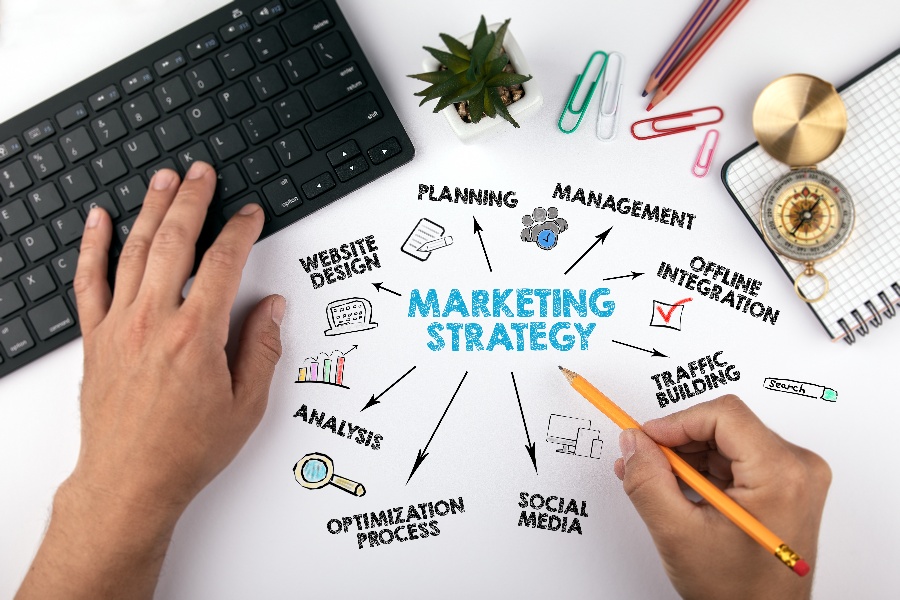The Evolution of Safety Training in Manufacturing
The evolution of safety training in the manufacturing sector has been a gradual process, with traditional methods serving as the cornerstone for ensuring workplace safety for decades. These conventional approaches have typically involved in-person classroom training and on-the-job observations to impart safety knowledge and skills to employees. However, these methods are known for their limitations, such as poor knowledge retention rates, which can hinder the effectiveness of safety training programs.
The introduction of virtual reality (VR) technology has marked a significant turning point in the evolution of safety training in manufacturing. VR has emerged as a transformative tool, revolutionizing traditional safety training approaches and offering a new and innovative way to enhance safety in manufacturing facilities. By simulating realistic workplace scenarios, VR technology provides an immersive and interactive learning experience, allowing workers to engage with safety protocols and procedures in a virtual environment. This shift from conventional methods to VR-based training signifies a progressive step towards more effective and engaging safety training methods in the manufacturing sector, ultimately aiming to create a safer work environment for all employees.
One specific example of this evolution is the adoption of VR simulations for safety training in manufacturing companies, as it enables workers to learn new production and assembly technologies from the comfort of their location, thereby addressing the need for more efficient and flexible safety training methods.
 Advantages of VR in Safety Training
Advantages of VR in Safety Training
The advantages of using virtual reality (VR) in safety training for the manufacturing sector are multifaceted and impactful. One key benefit is the enhanced learning retention that VR simulations offer. Research has shown that immersive VR experiences lead to improved knowledge retention compared to traditional training methods, as learners are more likely to remember information that they have interacted with in a realistic and engaging virtual environment.
Moreover, VR training has been found to significantly improve efficiency in safety training. By allowing workers to learn new production and assembly technologies from the comfort of their place, VR simulations can validate decisions in a 360-degree virtual world before real-time implementation, thereby streamlining the learning process and reducing the time required for training. This efficiency is particularly valuable in the fast-paced manufacturing industry where quick adaptation to new technologies and safety protocols is essential for operational success.
Furthermore, VR in safety training fosters a collaborative environment, enabling employees to engage with the training material in an interactive and shared virtual space. This collaborative aspect is particularly beneficial in manufacturing settings where teamwork and clear communication are essential for ensuring a safe working environment. By providing a shared virtual space for training, VR simulations can promote teamwork and mutual understanding of safety protocols among employees, thereby enhancing the overall safety culture within the manufacturing facility. These benefits collectively highlight the significant advantages that VR brings to safety training in the manufacturing sector, making it a valuable tool for promoting workplace safety and minimizing risks.
 VR Technology in Action: Case Studies and Applications
VR Technology in Action: Case Studies and Applications
An exemplary case study of the successful implementation of VR technology in manufacturing safety is Ford's achievement of a 70% reduction in production line injuries, highlighting the tangible impact and effectiveness of VR in enhancing workplace safety. By leveraging VR simulations, Ford was able to create a risk-free learning environment that allowed employees to practice safety protocols and procedures in a virtual setting, resulting in a significant decrease in workplace accidents.
In addition to Ford's success, XR Labs has made significant contributions by creating VR training simulations tailored for manufacturing and production units, underscoring the practical application and industry relevance of VR in safety training. This exemplifies how VR technology is being actively utilized to address specific safety training needs in manufacturing, showcasing the adaptability and versatility of VR in addressing industry-specific challenges. Moreover, the widespread adoption of VR safety training in various industries, including retail and agriculture, further emphasizes the broad applicability of VR technology in enhancing safety training experiences across diverse sectors. These diverse applications demonstrate how VR technology is revolutionizing safety training by providing engaging, immersive, and effective learning experiences for employees across different industries.
The Impact of VR on Learning Outcomes and Organizational Performance
The implementation of VR technology has been found to have a substantial impact on learning outcomes and organizational performance, especially in high-risk engineering industries. Research indicates that participants trained in a VR environment were able to increase their self-reported safety performance, such as identifying factors affecting safety, a month after their VR-based construction safety training. This demonstrates the long-term effectiveness of VR training in improving safety performance, which is crucial in high-risk manufacturing settings where worker safety is paramount.
Furthermore, studies have revealed that VR-based safety training can lead to improved behavioral outcomes compared to traditional training methods. While there may not always be a statistical difference in the behavioral criteria of the trainees between VR-based training and traditional training methods, the behavior of the trainees in the VR-based training was generally better than the traditional training method. This suggests that VR-based training has the potential to provide enhanced behavioral outcomes, which is a critical aspect of ensuring safety in manufacturing and related sectors. The evidence from these studies supports the notion that VR-based training may be more effective and efficient in preparing personnel to deal with hazardous situations within a safe 3D setting, ultimately contributing to improved safety performance and organizational outcomes in the manufacturing industry.
Implementing VR Safety Training: Practical Considerations
When implementing VR safety training, it is essential to consider the customization of VR training platforms to address specific safety training needs. This customization plays a crucial role in enhancing the relevance and effectiveness of VR in tackling industry-specific safety challenges. For example, VR simulations can be tailored to provide training for hazardous situations commonly encountered in manufacturing facilities, such as fire safety, machine operation, and emergency response protocols. By customizing VR training to address these specific needs, manufacturing companies can ensure that their employees are well-prepared to handle real-life safety scenarios, ultimately reducing the risk of workplace accidents and injuries.
Moreover, the incorporation of performance tracking and assessment features in VR training systems is a practical consideration that significantly contributes to the comprehensive evaluation of training effectiveness and learner progress. These features enable companies to monitor and measure the performance of employees during VR safety training, providing valuable insights into areas of improvement and proficiency. For instance, VR training platforms can track metrics such as response times, decision-making processes, and adherence to safety protocols, allowing companies to identify potential gaps in training and address them proactively. By leveraging these performance tracking and assessment features, manufacturing companies can continuously enhance the quality and impact of their VR safety training initiatives, leading to a safer and more prepared workforce.
Lastly, companies venturing into VR safety training must carefully consider the cost and resource implications associated with the adoption of this technology. While VR offers significant benefits in terms of safety training, it requires strategic planning and investment to implement effectively. This includes assessing the initial costs of VR hardware and software, ongoing maintenance and support expenses, as well as the allocation of resources for training content creation and platform management. By understanding the financial and resource commitments required for VR safety training, manufacturing companies can make informed decisions about integrating this technology into their safety programs, ensuring a sustainable and impactful approach to enhancing workplace safety.
The Future of VR in Manufacturing Safety
The future of VR in manufacturing safety is poised for significant growth and development, with an anticipated increase in the usage of VR-based training in the coming years. This reflects the growing recognition of VR’s potential benefits in enhancing manufacturing safety and improving training effectiveness. As more manufacturing companies acknowledge the value of VR technology in addressing safety training needs, there is a shift towards leveraging immersive and interactive training solutions to create a safer work environment for employees.
Moreover, the evolution of safety training is not limited to VR alone. The integration of augmented reality (AR), the metaverse, and customer experience transformation plays a pivotal role in shaping the future of safety training in manufacturing. The combination of these immersive technologies contributes to a holistic approach in enhancing safety protocols, risk assessment, and emergency response strategies. These advancements demonstrate the industry's commitment to continuously improving safety standards and embracing innovative solutions to mitigate workplace hazards, ultimately fostering a culture of safety and preparedness within manufacturing facilities.
The progressive shift towards immersive training solutions in manufacturing safety signals an exciting future for VR and simulation-based training in the industry. With the ongoing advancements in VR technology and its applications, manufacturing companies are increasingly investing in VR-based safety training to equip their workforce with the necessary skills and knowledge to navigate potential risks effectively. This proactive approach not only ensures a safer work environment but also reflects a commitment to staying at the forefront of innovative safety training methodologies.















